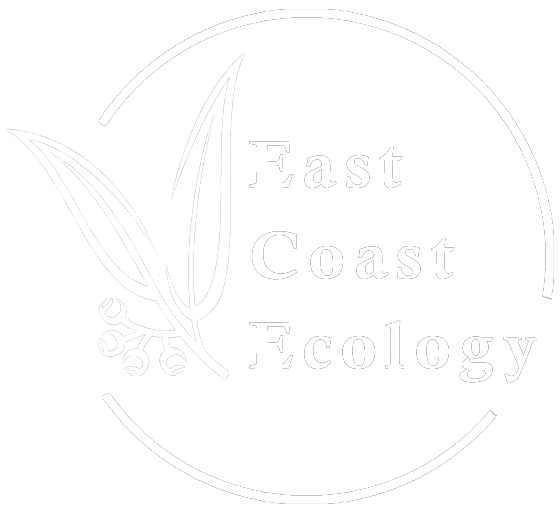
Review of Environmental Factors (REF) NSW
What is a Review of Environmental Factors (REF)?
A Review of Environmental Factors (REF) is an assessment that examines the possible environmental impacts of a project on the environment. The report is used by public or self-determining authorities to determine whether an activity should be approved taking into account a number of considerations. These considerations include all possible matters affecting or likely to affect the environment, including threatened species, ecological communities and their habitats.
REF reports NSW will assist with:
Determination of whether an activity should be approved, taking into account, to the fullest extent possible, all matters affecting or likely to affect the environment (in accordance with section 5.5 EP&A Act);
Identification of appropriate conditions, should approval be given; and
Determination of whether the activity is likely to have a significant impact on the environment or significantly impact threatened species, populations, ecological communities or their habitats. In that case, an Environmental Impact Statement (EIS) and/or Species Impact Statement (SIS) or Biodiversity Development Assessment Report (BDAR) will need to be prepared and considered before approval may be granted (s.5.7 EP&A Act). East Coast Ecology provides further information and consultation on these various reports to assist your approval process.
A Review of Environmental Factors (REF) is required to address all relevant legislation, policy and guidelines (such as NSW State Environmental Planning Policy, Water Management Act, and Biodiversity Conservation Act) including:
Environmental Planning and Assessment Act 1979 (NSW) and Environmental Planning and Assessment Regulation 2021 (NSW)
State Environmental Planning Policy (Transport and Infrastructure) 2021
Biodiversity Conservation Act 2016 (NSW) and Biodiversity Conservation Regulation 2017 (NSW)
Environment Protection and Biodiversity Conservation Act 1999
State Environmental Planning Policy (Resilience & Hazards) 2021 (formerly Coastal Management)
State Environmental Planning Policy (Biodiversity Conservation) 2021
Water Management Act 2000, Fisheries Management Act 1994, and Biosecurity Act 2015
Heritage Act 1977, Wilderness Act 1987, Rural Fires Act 1997, Protection of the Environmental Operation Act 1997
Local Environmental Plans & Development Control Plans (relevant to your local government area), and
Consideration of the proposal against the thresholds of the NSW Biodiversity Offsets Scheme (BOS).
A comprehensive environmental assessment of your proposed development is provided against these Acts, and East Coast Ecology will clearly detail how your application complies with the above legislation.
Need a Review of Environmental Factors Report?
Give us a call, send us an email or fill out the contact form and one of our experts will get back to you shortly.
PHONE: 02 7813 6119
EMAIL: admin@ececology.com.au
When is a Review of Environmental Factors required?
Under Part 5 of the NSW Environmental Planning and Assessment Act 1979, public authorities must undertake a Review of Environmental Factors (REF) in order to examine, to the fullest extent possible, the potential impacts of an activity on the environment. The complexity of an REF NSW varies depending on the nature and extent of the environmental impact.
Here are the circumstances that determine whether a Review of Environmental Factors is required:
The proposal is an activity
The activity is not in accordance with a prior approval
The proposal is legally permissible
The proposal is consistent with DPE policy
Review of Environmental Factors (REF) reports are prepared by the determining authority, who will usually engage a range of expert consultants with appropriate qualifications and experience to ensure the REF addresses the entire scope of relevant environmental issues. These experts produce technical reports on the relevant environmental issues, such as:
Biodiversity
Aboriginal Heritage
Non-Aboriginal (European) Heritage
Noise and Vibration
Social and Visual Amenity
Contaminated Lands
Waste and Pollution, and
Traffic and Transport.
Not all ‘activities’ will require full REFs, and specialist technical reports.
For more information on the requirements of an REF NSW and technical reports, please contact us for a free consultation with one of our experts.
What is the process for preparing a Review of Environmental Factors in NSW?
Preparing a Review of Environmental Factors report starts with a consultation with an experienced team of Sydney ecologists, like East Coast Ecology. Our expert assistance will help you with the following actions for the preparation of a Review of Environmental Factors:
Providing assistance in reviewing the legislative requirements for the proposed works in order to determine if they can be carried out on a ‘without consent’ basis.
Performing a preliminary review of the proposal to outline the required supporting technical reports for the assessment of environmental or other impacts.
Conducting the necessary field testing and analysis in accordance with the NPWS’ guidelines for a REF.
Putting together a summary and key considerations for the potential impact of the proposed activity on the environment and other related factors.
Inclusion of alternatives, safeguards, or mitigation measures to ensure that the estimated impact on the environment and surrounding development area is kept to a minimum.
Delivery of the prepared REF to the public authority for internal discussion and determination of the proposed activity’s effect on the environment.
Why Choose East Coast Ecology?
East Coast Ecology comprises a highly experienced team as Ecologists, Environmental Scientists, and Bushfire Practitioners. We have helped clients deliver hundreds of Development Applications, State Significant Developments, and State Significant Infrastructure projects across New South Wales.
A Review of Environmental Factors (REF) can only be prepared by a public authority or on behalf of a public authority.
East Coast Ecology brings over a decade of experience in preparing REFs, and our team includes former NSW Government and Local Government Biodiversity Officers who understand our clients' expectations, local councils, government agencies, and other public authority. Our staff are experienced at REF NSW report preparation, and have produced reports for Local and NSW Government, Utility and Telecommunication authorities and roads and transport authorities in Sydney and Regional NSW.
East Coast Ecology offers REF reports across New South Wales. This includes Western Sydney to Northern Beaches, Greater Sydney, Blue Mountains, Newcastle, Central Coast, Port Macquarie, North Coast, Shoalhaven, Eurobodalla, Hunter Valley, Wollongong, Illawarra, Southern Highlands, Central West, Yass Valley, Hill Tops, Upper Lachlan Shire, and the rest of regional New South Wales.
What is included in a Review of Environmental Factors?
Our Reviews of Environmental Factors (REF) are strategically designed to be easy to read and easy to interpret by you, and your stakeholders. Our REFs are prepared in accordance with the latest edition of the NPWS Guidelines for preparing a Review of Environmental Factors.
East Coast Ecology will provide the following information in a Review of Environmental Factors (REF):
The proposed activity, including a description of the proposed activity, reasons for the activity and consideration of alternatives
Site suitability and permissibility, and
The existing environment.
PHYSICAL AND CHEMICAL IMPACTS
A Review of Environmental Factors (REF) is required to address physical and chemical impacts. An REF NSW considers the following issues:
Is the proposal likely to impact on soil quality or land stability?
Is the activity likely to affect a waterbody, watercourse, wetland or natural drainage system?
Is the activity likely to change flood or tidal regimes, or be affected by flooding?
Is the activity likely to affect coastal processes and coastal hazards, including those under projected climate change conditions?
Does the proposal involve the use, storage or transport of hazardous substances, or the use or generation of chemicals that may build up environmental residues?
Does the activity involve the generation or disposal or gaseous, liquid or solid wastes or emissions?
Will the activity involve the emission of dust, odours, noise, vibration or radiation?
BIODIVERSITY IMPACTS
The objective of the environmental assessment of impacts on biodiversity is to enable decision-makers to ensure that developments deliver the following environmental outcomes:
Maintenance or improvement of biodiversity values (i.e. there is no net impact on endangered species or native vegetation)
Conservation of biodiversity and promotion of ecologically sustainable development
Environmental protection of areas of high conservation value, and
Environmental protection of the long-term viability of local populations of a species, population or ecological community and prevent their local extinction (extirpation).
A Review of Environmental Factors (REF) is required to address biodiversity impacts. REF reports consider the following biodiversity issues:
Is the proposed activity likely to affect any declared area of outstanding biodiversity value, critical habitat, or environmental asset of intergenerational significance?
Is any vegetation likely to be cleared or modified, including ecological communities and plant community types of conservation significance?
Does the activity have the potential to endanger, displace or disturb fauna (including fauna of conservation significance) or create a barrier to their movement?
Is the activity likely to result in removing protected flora, plants, or fungi of conservation significance?
Is the activity likely to contribute to a key threatening process to biodiversity or ecological integrity?
Is the activity likely to introduce pests (including weeds, pathogens and feral animals) or genetically modified organisms into an area?
ABORIGINAL HERITAGE IMPACTS
The key purpose of the REF NSW for Aboriginal cultural heritage values is to identify and mitigate any potential impacts on the Aboriginal cultural significance of the site and study area. A key part of this process is consultation with relevant Aboriginal community members.
A Review of Environmental Factors (REF) is required to address Aboriginal Heritage impacts. Relevant considerations include:
Will the activity disturb the ground surface or any modified trees?
Does the activity affect or occur close to known Aboriginal objects or Aboriginal places or an Aboriginal cultural asset of intergenerational significance?
Is the activity located in areas where landscape features indicate a high likelihood of Aboriginal objections being present?
Can the disturbance of objects or landscape features be avoided?
Does the activity affect wild resources or access to these resources, which are used or valued by the Aboriginal community?
Does the activity affect Aboriginal peoples’ access to culturally important places?
NON-ABORIGINAL HERITAGE IMPACTS
A Review of Environmental Factors (REF) is required to address non-Aboriginal Heritage impacts. Questions include:
What is the impact on places, buildings or landscapes of heritage significance?
What is the impact on relics, moveable heritage items, or an area with a high likelihood of containing relics?
Is any vegetation of cultural value likely to be affected?
CONCLUSION
When considering the likely environmental significance of the impacts associated with the proposed activity, proponents should consider these questions:
How extensive are the impacts?
How adverse are these impacts on environmentally sensitive areas?
How acceptable are these impacts considering the nature of these impacts?
To finalise an REF, a decision must be made as to whether:
There is likely to be a significant impact on the environment (if so, an Environmental Impact Statement is required)
There is likely to be a significant impact on threatened species, populations, ecological system or their habitats (if so, a Biodiversity Development Assessment Report [BDAR] is required); and
There is likely to be a significant impact on Matters of National Environmental Significance (MNES).
Contact us
for a free quote
We would love to hear from you.
Give us a call, send us an email or fill out the contact form and one of our experts will get back to you shortly.
PHONE: 02 7813 6119
EMAIL: admin@ececology.com.au


